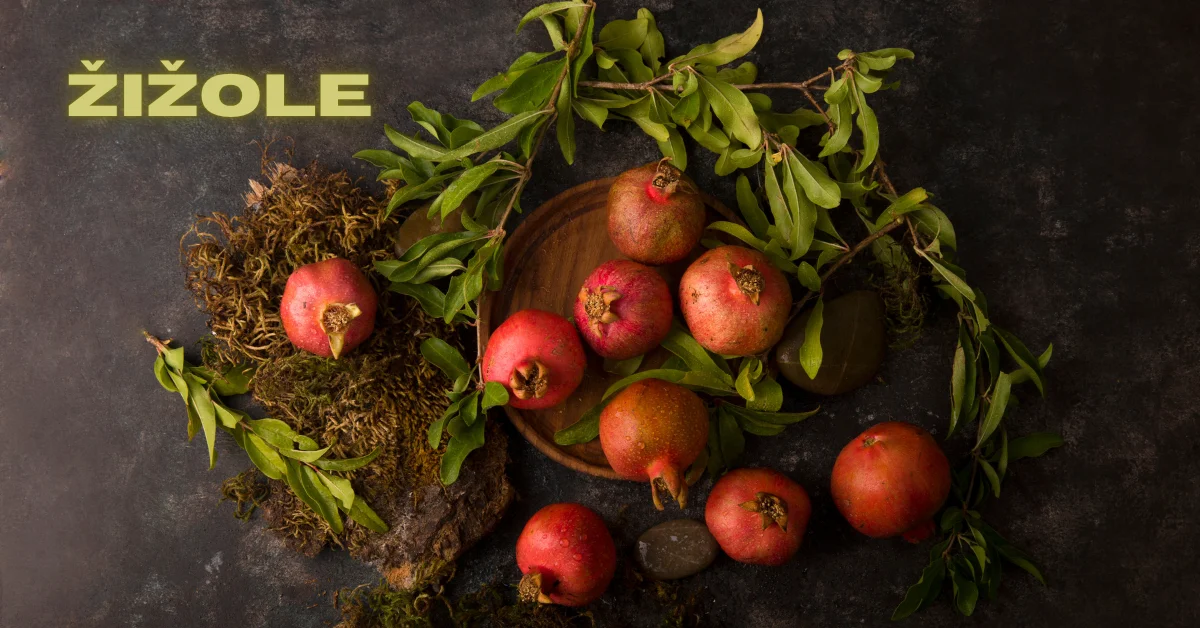Introduction to the Žižole Fruit
What is Žižole?
Tiny but mighty, the Žižole fruit—often referred to as the jujube—is nature’s bite-sized burst of nutrition. It’s a small, round fruit that can be eaten fresh, dried, or even brewed into teas. Though lesser-known in the Western world, it’s a staple in traditional diets and natural remedies throughout Asia and the Mediterranean.
Origins and Cultural Significance
This small wonder has been cherished for over 4,000 years. It originated in China, where it was dubbed the “fruit of immortality,” and later made its way across Central Asia, the Middle East, and parts of Europe—particularly the Balkans, where it’s fondly called Žižole.
Historical Roots of the Žižole Fruit
Ancient Cultivation
The cultivation of Žižole dates back to the Neolithic period. Ancient farmers favored it for its resilience and longevity. The trees were seen as sacred, often grown near temples and healing sanctuaries.
Role in Traditional Medicine
In traditional Chinese medicine, Žižole is used to tonify the blood, ease insomnia, and improve spleen function. Ayurvedic practitioners also embraced its calming and rejuvenating qualities.
Symbolism in Ancient Texts
Ancient Persian poetry speaks of the fruit as a gift from the gods. In some cultures, it symbolized eternal love and was included in wedding rituals.
Where the Žižole Grows
Native Regions and Global Spread
Native to China, Žižole trees have spread globally due to their hardy nature. Today, they’re found in:
- India
- Iran
- Pakistan
- The Mediterranean
- Southern Europe
Climate and Soil Preferences
These trees love sun-drenched areas and well-drained soils. They thrive in semi-arid conditions, making them ideal for regions with hot summers and mild winters.
Challenges in Modern Cultivation
Modern farming practices sometimes overlook Žižole due to its slower ROI compared to commercial fruits. Yet its resistance to pests and minimal water needs make it a gem for sustainable agriculture.
Botanical Profile
Appearance and Taste
At first glance, Žižole resembles a date or a tiny apple. When fresh, the skin is reddish-brown, and the flesh is crisp. Dried, it’s chewy and sweet—like nature’s candy.
Seasonal Growth Cycle
The tree blossoms in spring with small yellow-green flowers. Fruit matures in late summer through fall.
Nutritional Composition
Žižole is rich in:
- Vitamin C
- Iron
- Potassium
- Antioxidants
- Fiber
All packed into just a few bites!
Health Benefits of Žižole
Immunity Booster
Thanks to its high Vitamin C content, Žižole supports the immune system like a champ—great during cold and flu season.
Gut Health and Digestion
The fiber in Žižole acts as a gentle broom for your digestive tract. Say goodbye to bloating and constipation.
Anti-aging and Antioxidant Properties
Loaded with antioxidants like flavonoids and polysaccharides, Žižole helps fight off oxidative stress and keep your skin glowing.
Mental Clarity and Stress Reduction
Traditional medicine praises Žižole for its calming effects on the nervous system. Having trouble sleeping? Brew some Žižole tea.
Culinary Uses
Traditional Dishes and Recipes
In China and Iran, Žižole is cooked with rice, meats, or turned into jams. In the Balkans, it’s often dried and enjoyed with nuts.
Modern Culinary Trends
Žižole chips, energy bars, and syrups are popping up in health food stores and smoothie cafes worldwide.
Using Žižole in Beverages and Snacks
Try it in:
- Herbal teas
- Detox smoothies
- Trail mixes
- Vegan desserts
Žižole in Traditional and Modern Medicine
Folk Remedies
Elders swore by Žižole decoctions for coughs, stress, and digestive issues. Even today, some rural areas use the bark and leaves in healing poultices.
Current Scientific Research
Modern studies are validating what ancient healers knew. Žižole extracts show promise in boosting brain function, improving sleep, and supporting heart health.
How to Grow Your Own Žižole Tree
Planting Techniques
Start with a sapling or seed in late winter. Choose a sunny, sheltered location.
Maintenance Tips
Minimal pruning is needed. These trees are low-maintenance and pest-resistant.
Harvesting Tips
Fruit is best picked when reddish-brown and slightly soft. Use a gentle twist and snap method.
When and How to Harvest
Late September to early November is prime time. Harvest regularly to avoid overripe fruit falling to the ground.
Storage Best Practices
Store fresh Žižole’s in a cool, dry place. Dried ones can last months in airtight containers.
Shelf Life and Preservation
Dried Žižole’s can be frozen or vacuum-sealed to extend shelf life even further.
Market Value and Economic Importance
Local vs Global Demand
There’s a growing niche market for organic Žižole’s, especially in wellness and gourmet food circles.
Organic Farming Trends
Due to its hardiness, Žižole’s is ideal for organic and regenerative farming.
Trade and Export Value
Countries like China, Iran, and India are major exporters. Europe and North America are emerging markets.
Fun Facts and Cultural Trivia
Žižole‘s in Festivals
In some Mediterranean villages, Žižole’s is celebrated in fall harvest festivals with music, dancing, and traditional dishes.
Folk Tales and Sayings
Legends say eating Žižole’s brings peace and long life. In Serbia, a common phrase goes: “Healthy as a Žižole’s tree.”
Sustainability and Ecological Role
Biodiversity Support
Its flowers attract bees and birds, supporting local pollination.
Drought Resistance and Climate Impact
In an era of climate change, Žižole’s stands out for needing little water and thriving in poor soils.
Comparing Žižole’s with Other Fruits
Žižole‘s vs Dates
Both are sweet and chewy when dried, but Žižole’s has a more apple-like crunch when fresh.
Žižole’s vs Olives
Unlike olives, Žižole’s is sweet and eaten raw. They do share similar growing regions.
Unique Attributes
Few fruits blend medicinal benefits, rich history, and culinary versatility like Žižole’s.
Common Myths and Misconceptions
Debunking Health Claims
No, Žižole’s won’t make you immortal—but its health perks are real.
Cultivation Misunderstandings
Many think it’s hard to grow—it’s actually one of the easiest fruit trees to maintain!
Conclusion
The Žižole’s fruit may be small, but its legacy is mighty. From ancient healing to modern kitchens, it’s a flavorful bridge between past and present. Whether you munch it fresh or brew it in tea, Žižole’s is a sweet way to nourish your body and soul.

